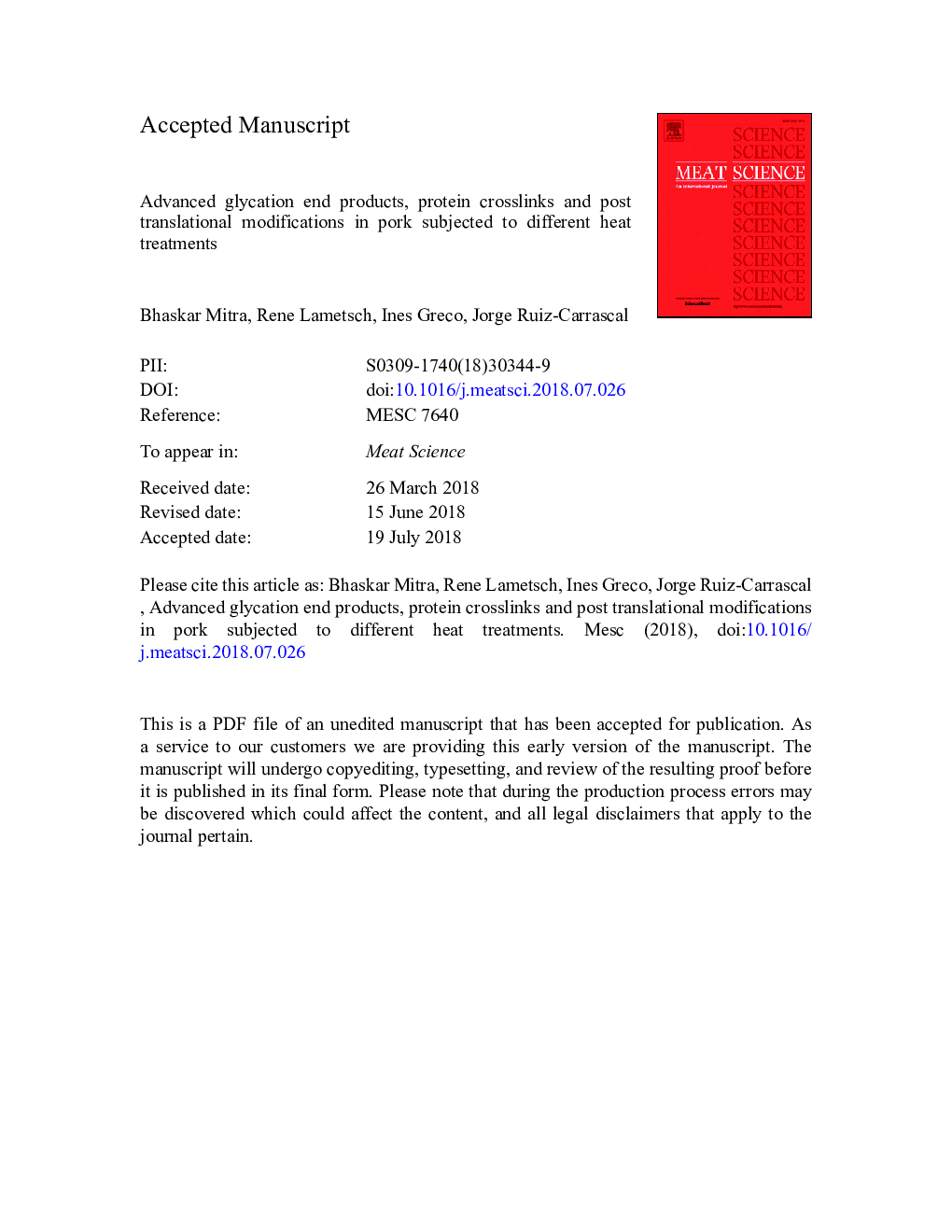| Article ID | Journal | Published Year | Pages | File Type |
|---|---|---|---|---|
| 8502489 | Meat Science | 2018 | 33 Pages |
Abstract
The aim of the study was to characterize Maillard reactions in meat under different cooking treatments. Considered temperature-time combinations included raw samples (control), 58, 80, 98 and 160â¯Â°C for 72â¯min, 118â¯Â°C for 8â¯min and 58â¯Â°C for 17â¯h. Furosine, a marker for heat treatment, was detected in all groups with roasting having a 4-fold increase over the control. Sous-vide treatment at 80â¯Â°C, boiling and autoclaving also contribute to a significant increase in furosine. NÉ-carboxymethyllysine, an indicator for advanced glycation end products, showed negligible amount in control, but increased with cooking temperature, with oven samples showing the highest values. A similar increasing trend was observed in lanthionine, covalently bonded protein crosslinks, which arises due to severe thermal regimes. Simultaneously, glycation and deamidation formation were tracked in meat proteins through peptidomics to highlight residue level changes that might affect nutrient value in processed muscle based foods.
Keywords
Related Topics
Life Sciences
Agricultural and Biological Sciences
Food Science
Authors
Bhaskar Mitra, Rene Lametsch, Ines Greco, Jorge Ruiz-Carrascal,
